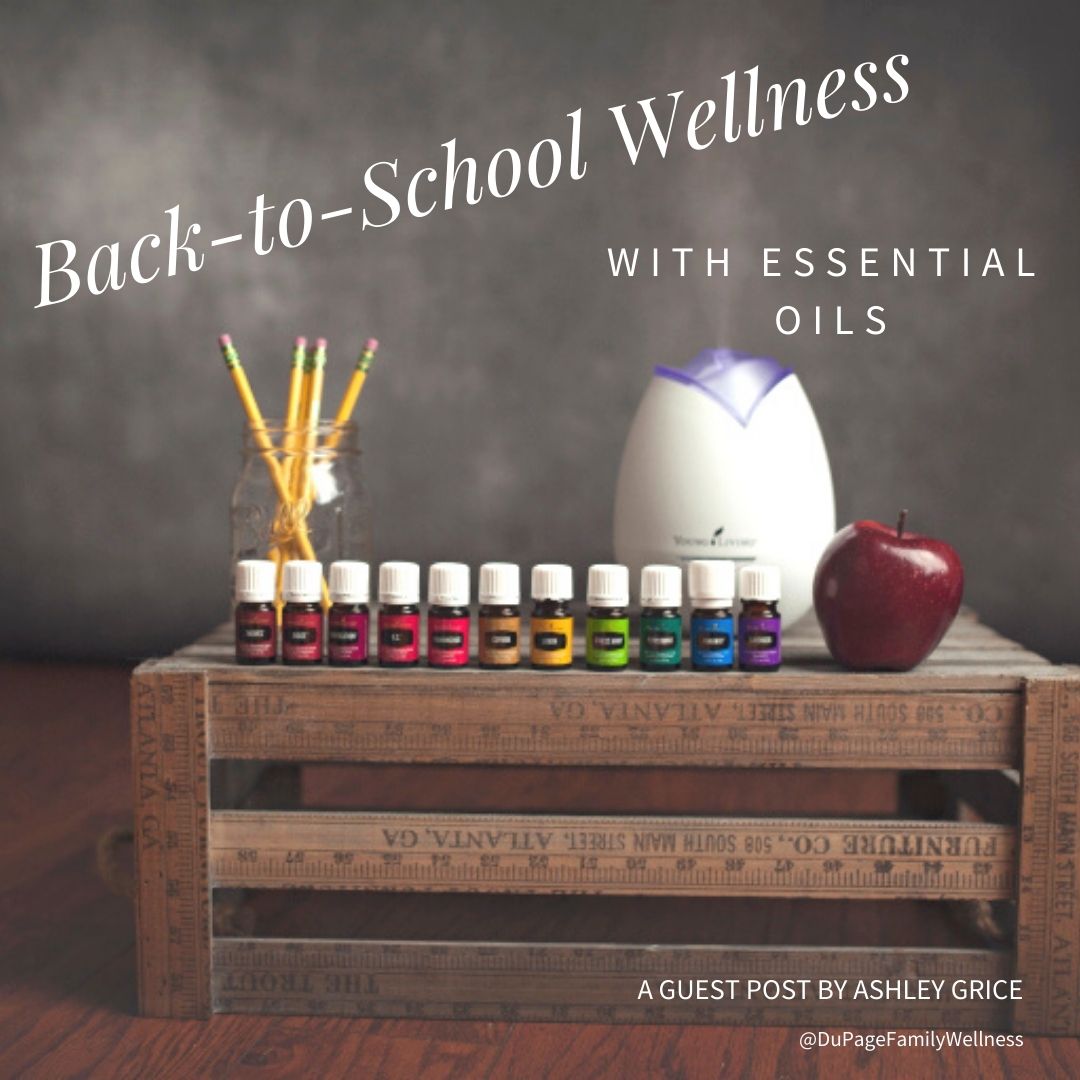
Essential oils are really popular right now, but getting started with them can be overwhelming. It is helpful to have a guide that can teach you how to use them safely and effectively.
In the past couple months I have started to learn more about them. It's been great to have the guidance of Young Living distributor Ashley Grice.
She is a fantastic resource, and we are excited to share this guest blog written by her...
Back-to-School Wellness with Essential Oils
August always brings with it a sense of anticipation and excitement, but there’s nothing quite like the anticipation (and maybe even anxious-laden uncertainty) that we’re being met with this Back-to-School season. Whether your little ones are heading back for in-person education in the classroom, exploring e-learning options from home, or you’re homeschooling for the first (or fifteenth!) time, protecting the physical and emotional well-being of our Littles is at the forefront of our minds.
While we are faced with lots of different choices and decisions as parents, the good news is that keeping them supported and healthy as they embark on -what will likely feel like- a new adventure this year doesn’t have to be overwhelming or difficult.
Young Living Essential Oils has been supporting families on their wellness journeys for over 25 years, and the following are some of my family’s favorite essential oil singles, oil blends, and oil-infused products that have allowed us to experience exceptional health outcomes.
First, all things THIEVES!
Even if you’ve never used essential oils before, you’ve likely heard about this incredible oil blend and its use for overall wellness and immune system support. And those who have used it before know exactly why this is the first essential oil I’d never want to be without!
Young Living’s Thieves oil blend was inspired by the 15th century legend of French thieves who formulated a combination of aromatic herbs and oils that was highly effective in supporting their bodies amidst the bubonic plague that had been ravaging Europe during that time.
Read more ...
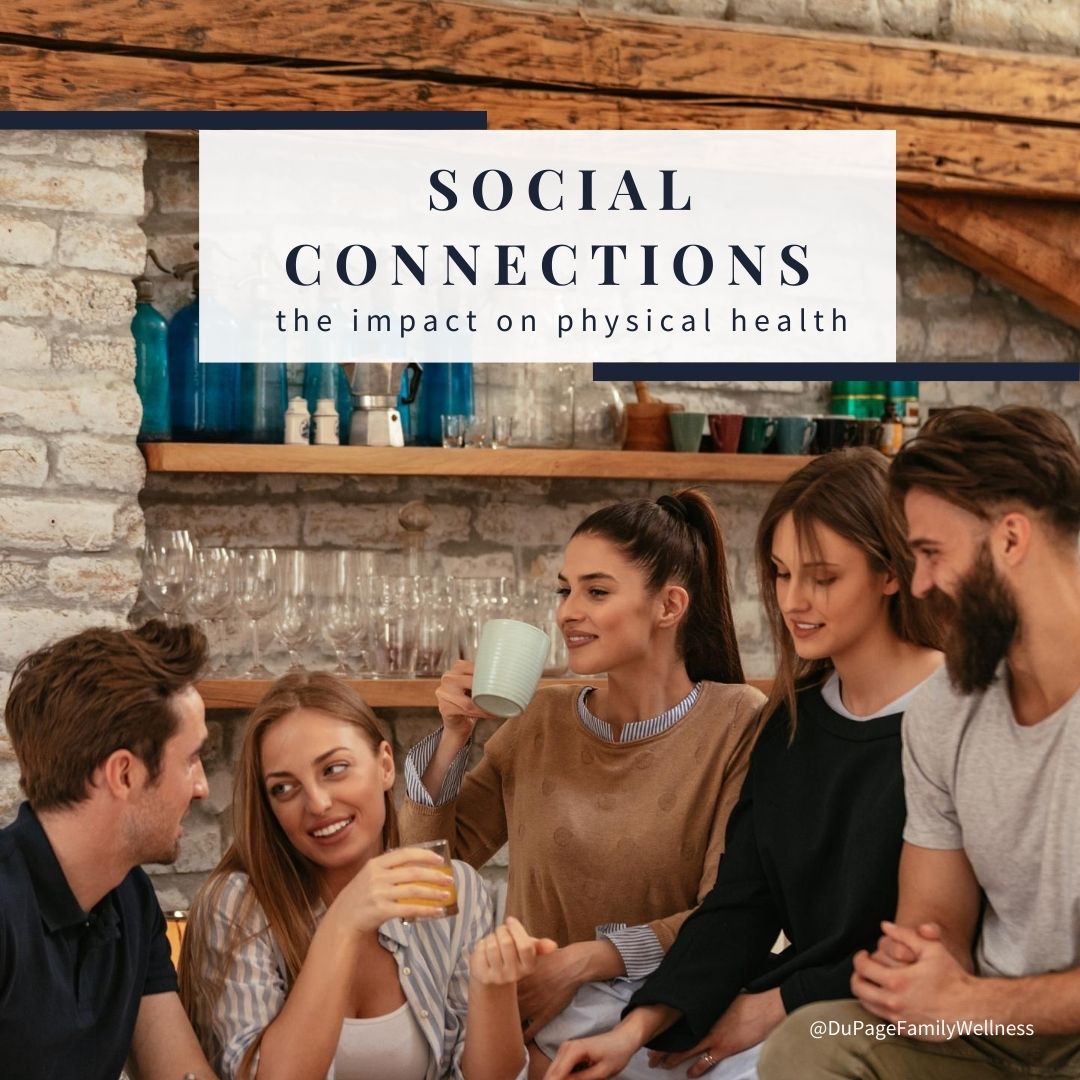 There are many things people know they must do if they want to be healthy: eat well, get adequate movement, refrain from smoking, and limit alcohol. But now we can add “enjoying social connections” to our list of healthy habits!
There are many things people know they must do if they want to be healthy: eat well, get adequate movement, refrain from smoking, and limit alcohol. But now we can add “enjoying social connections” to our list of healthy habits!
Social Connections Impact on Physical Health
Research is showing that social connections have a major impact on both our mental and physical health. It is not hard to believe that those who feel more connected with others tend to struggle less with anxiety and depression. They also have higher self esteem, greater levels of empathy, trust others more, and tend to be more cooperative.
While the impact of social connections on emotional wellbeing may be expected, the extensive impact on physical health may come as a surprise to many. According to Dr. Emma Seppala, the American Association for the Advancement of Science published a study that found that “a lack of social connection is a greater detriment to health than obesity, smoking and high blood pressure.”
A lack of social connections has been linked to obesity levels, inflammation, and hypertension. It may be shocking, but strong social connections actually improve your immune system and lead to a 50% increased chance of longevity. More research is needed to discover why social connections have such a dramatic impact on health, but the research is clear that social connections are extremely important if you want to live a long and healthy life.
Insights From the Research
- Research shows that the quantity of relationships is important both with teens and the elderly, while the quality of relationships matters more in midlife.
- It is also important to realize that you don't need to be physically with someone to have a social connection. If you feel seen, heard, and understood, that is enough to feel connected to others.
- Recognize that it is possible to feel isolated and alone, even if you are surrounded by people.
- Don’t underestimate the importance of feeling connected to yourself.
How to Cultivate Connection
In this season, with Covid-19 and the social distancing mandates, it is more important than ever to find ways to cultivate social connections. You may have to be creative, but your health is worth the effort.
Read more ...
 While Dr. Jamie is welcoming her new baby into the world, she still has your back!
While Dr. Jamie is welcoming her new baby into the world, she still has your back!
Dr. Jamie has arranged for three chiropractors that she trusts to care for her patients. Please reach out to any of these wonderful practitioners directly to schedule an appointment in one of their offices.
Dr. Jessica Leighton
Alliance Chiropractic & Acupuncture in Naperville 630-995-3189
Dr. Jessica Leighton (Flynn) graduated from National University of Health Sciences and Albion College after an internship at the Salvation Army in Chicago. While there she developed a passion for helping women during pregnancy and the postpartum phase.
Her clinic in Naperville is dedicated to women’s health and wellness, prenatal and postpartum care, as well as family chiropractic care. Acupuncture services complement her practice, and can specifically target enhancing natural fertility.
She supports both men and women, who are trying to conceive naturally and those navigating various fertility treatments. Her own fertility struggles enable her to understand the physical and emotional component to many fertility challenges.
Dr. Anita Dickerson
41 North Chiropractic & Soft Tissue Clinic in St. Charles 630-549-7870
Dr. Anita Dickerson graduated with a doctorate in chiropractic medicine from Western States Chiropractic College in Portland, Oregon.
She has devoted her career to treating patients with the Active Release Technique (ART), because she finds it to be the best technique for soft tissue issues. Her patients also receive gentle chiropractic adjustments, as well as guidance in balancing muscles.
Dr. Anita understands that balancing muscles involves more than simply identifying muscles that are either tight or weak. She realizes that it’s critical to determine why specific muscles are affected before starting to stretch or strengthen them.
She recognizes that exercises can be ineffective and counterproductive when applied too early. Once underlying problems have been corrected, she guides patients through specific exercises designed to stretch and strengthen muscles sequentially - making sure each muscle is capable of doing what it is intended to do.
Read more ...
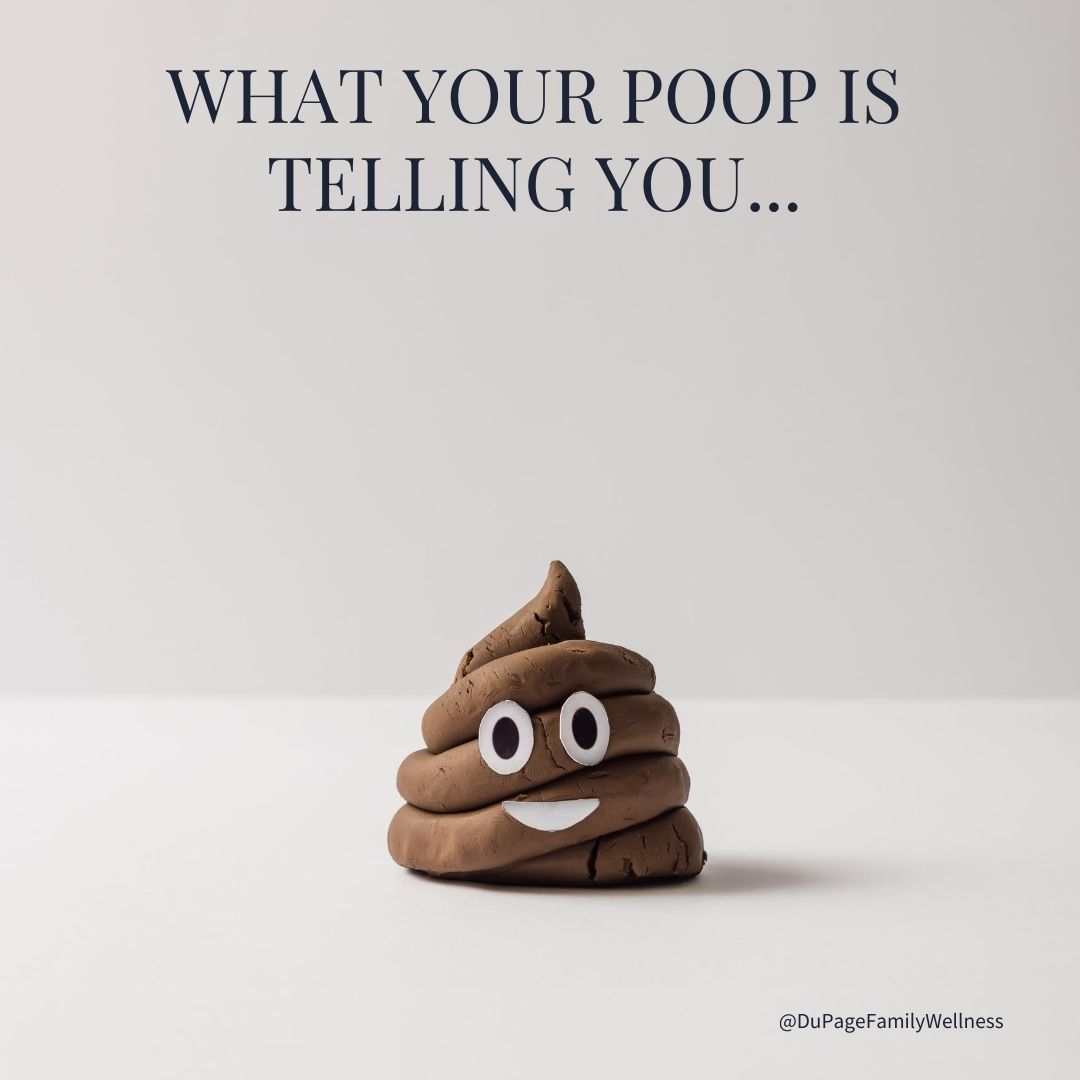 Our digestive health is crucial to the overall health of our body! If we want to know how our digestion is going, all we have to do is listen to our body.
Our digestive health is crucial to the overall health of our body! If we want to know how our digestion is going, all we have to do is listen to our body.
When our digestion is really bad, we will have all kinds of unpleasant symptoms. Stomach upset, gas, constipation, or diarrhea are symptoms that things are off. But even without these obvious signs, your digestion might be suffering.
Paying attention to our poop is a great way to tell how our digestion is doing. However, since we don’t often talk about our poop we may not know if what we are experiencing is a sign of health. It is important to shake the awkwardness of the conversation, so that we can listen to the messages our body is sending us.
Our gut health has such a great impact on our overall health, so we need to pay attention to what our poop is telling us!
The Basics
When we talk about poop, we will be looking at the form, frequency, color, and smell. Each of these aspects can give us insight into our digestive health.
When we consider the form of our poop, the Bristol Stool Chart is an extremely helpful tool. This chart was developed by Stephen Lewis and Ken Heaton at the Bristol Royal Infirmary. It is a diagnostic tool which classifies human feces into seven forms.
Take a moment to look at the chart and consider what you tend to experience!

Cabot Health, Bristol Stool Chart / CC BY-SA (https://creativecommons.org/licenses/by-sa/3.0)
An Ideal Poop
Ideally, we will have smooth soft poop that doesn’t fall apart when the toilet is flushed (a four on the Bristol Chart). The poop should be a chocolatey brown color like that of a Hersey bar. Bowel movements should not have a very strong odor or be difficult to wipe.
Since bowel movements are one of the body’s ways of eliminating toxins, it is important to have one to three bowel movements consistently each day. It should not hurt to poop, and you shouldn’t have to strain.
Trouble Signs
- Form - Having poop that is too soft could mean that you are simply not eating enough fiber, while poop that is too hard it may indicate that you need to drink more water.
- Color - Poop that is very dark could indicate bleeding in the GI tract, while poop that is too light may indicate malabsorption.
Read more ...
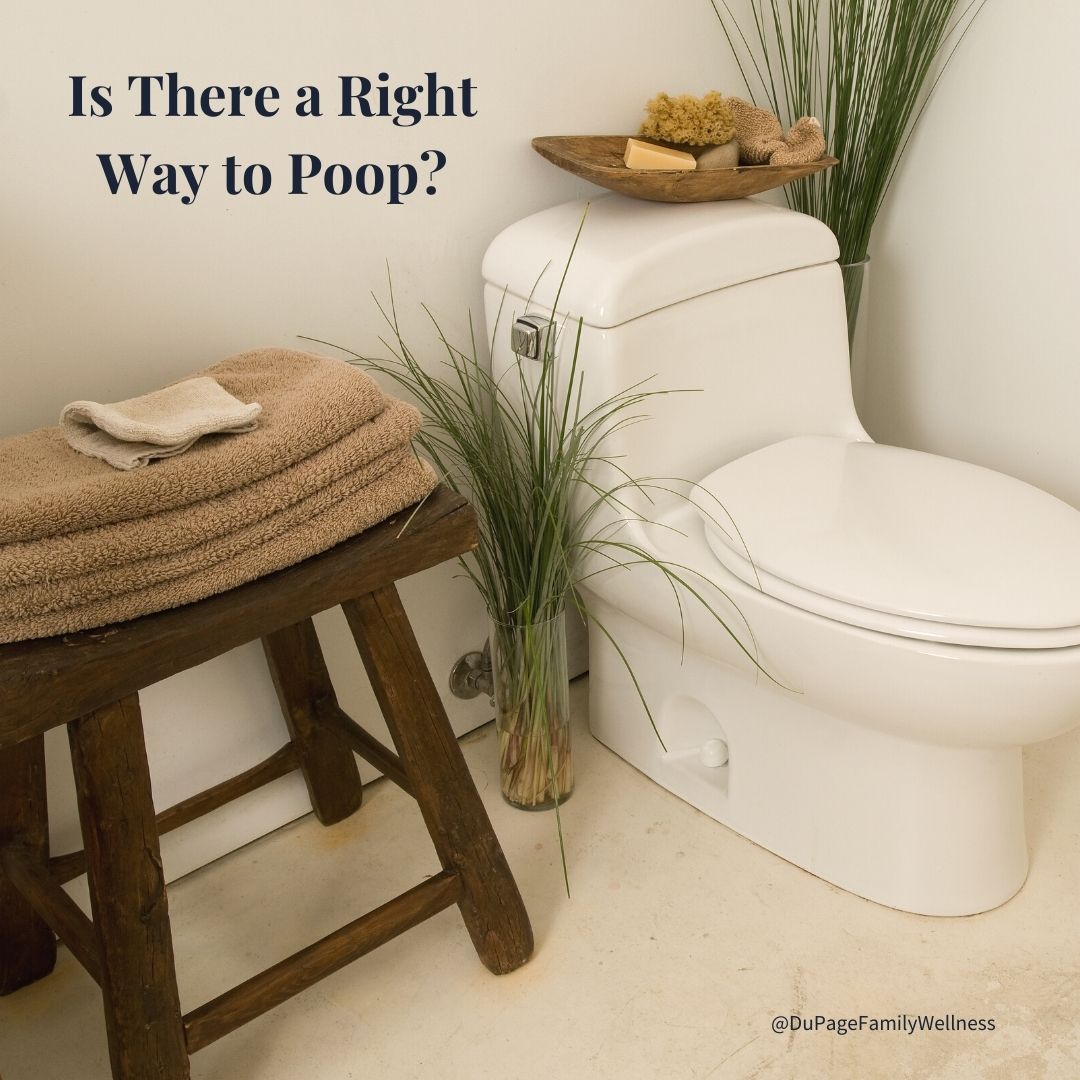 Our digestive health is crucial to the overall health of our body! So, when it is off we must take notice. The body has many ways of telling us that healing is needed in this area. Some people feel bloated and gassy, while some struggle with diarrhea or constipation. Still others have stomach upset if they eat certain foods.
Our digestive health is crucial to the overall health of our body! So, when it is off we must take notice. The body has many ways of telling us that healing is needed in this area. Some people feel bloated and gassy, while some struggle with diarrhea or constipation. Still others have stomach upset if they eat certain foods.
While these symptoms are uncomfortable, they can be helpful messengers if we act upon what they are telling us. Since our gut health impacts our overall health so greatly, we should do all we can to support it. What we eat, how we move, and even how we poop will have an impact!
Let’s take a look at a trendy health practice that is based on ancient practice to discover the most natural way to poop!
Who Squats?
For centuries people did not have chair style toilets. Until the 1800’s, only the very wealthy in a community had this luxury. And even today many cultures around the world still squat to poop. In fact, it is estimated that over a billion people around the world squat when they go to the bathroom!
Why Squat?
Many people say that squatting is the most natural way to poop, putting the body in the right position to strain less while eliminating waste more thoroughly. Let’s take a look at biology to see why.
The puborectalis muscle works like a sling, looping around the rectum and closing it off from the anal canal. While sitting, the bend between the rectum and the anus is still there. Squatting relaxes this muscle getting rid of this bend. This straighter pathway allows everything to flow better, helping to prevent constipation and strain on the gut.
A study in Japan, using x-rays with contrast, found that pooping in a squatting position does actually make elimination easier. It has been clinically proven to eliminate strain by 91%, increase emptiness by 85%, and decrease time spent by 71%.
A Modern Solution
The Squatty Potty is a modern toilet stool that allows you to get in a squatted position while sitting on the toilet. It was created by a family simply trying to help a member of their family who was dealing with constipation.
In addition to having a great product design, the Squatty Potty is known for their hysterical (but educational) commercials…
Read more ...
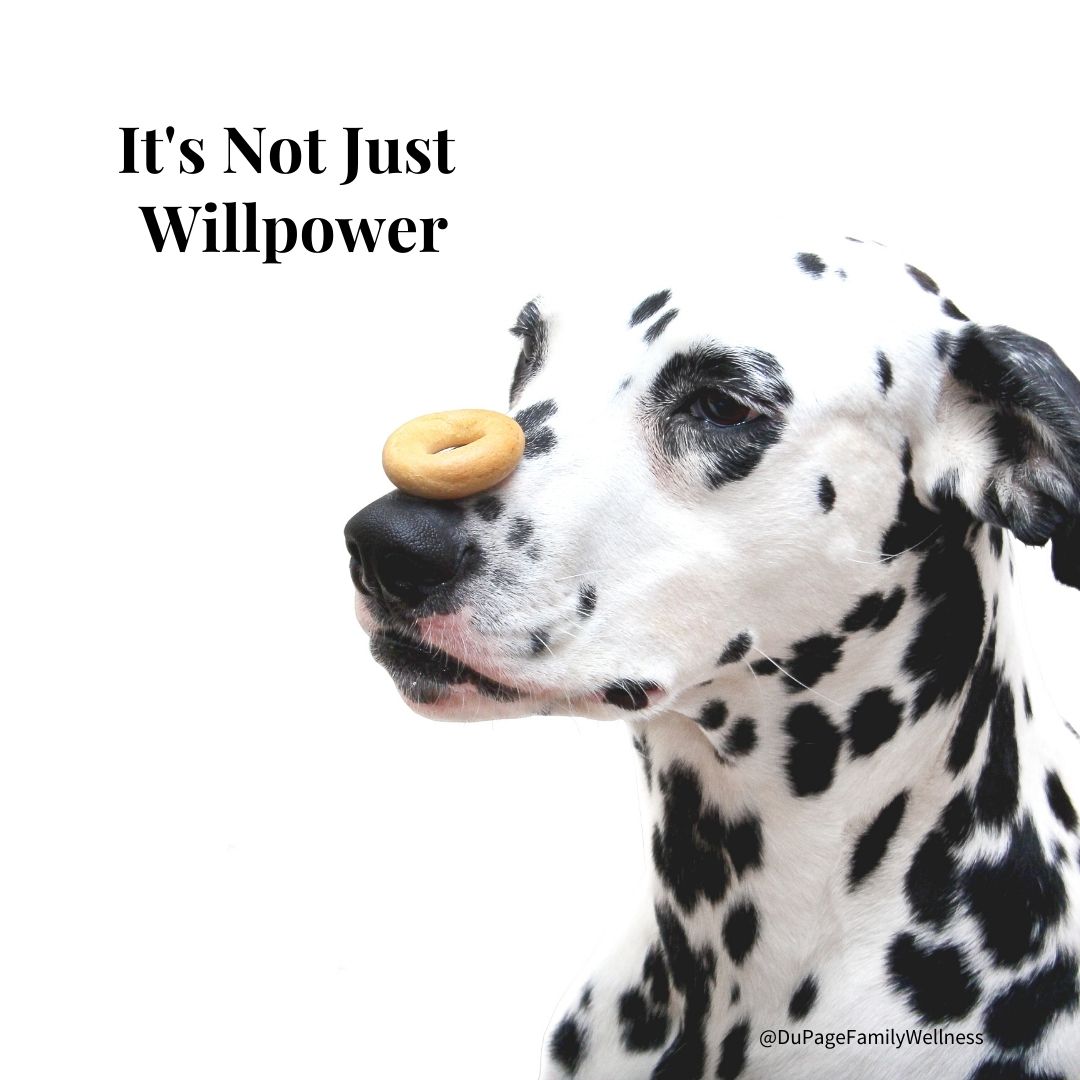 We grew up being told that if we eat too much we will gain weight. While this statement isn’t totally incorrect, the truth is much more complex.
We grew up being told that if we eat too much we will gain weight. While this statement isn’t totally incorrect, the truth is much more complex.
When we take a shallow look at this issue, it can easily lead to judgement and blame. For those who struggle to lose weight, this simplistic way of thinking can result in a lot of shame.
Investigative science, health journalist, and author Gary Taubes says, “We don’t gain weight because we’re eating more. We’re eating more because we’re gaining weight.”
Let’s take a look at what he meant!
The Cycle
Gaining body fat has a profound impact on what is happening within our bodies. Excess fat sets our hormones up to trigger us to want to eat more. By increasing the levels of ghrelin, the “hunger hormone”, body fat is actually controlling our hunger cues.
In addition, excess fat causes inflammation within the system. This not only impacts how we feel physically, it also sets off a cycle that ultimately disconnects us from making good decisions. As inflammation increases, it drastically impacts the quality of our sleep, which leads us to impulsivity - especially in what we eat.
According to David Perlmutter author of Brain Wash, “people who chronically don’t sleep well will consume, on average, approximately 380 calories more each day, without a similar increase in energy expenditure.” These extra calories can result in about a pound of fat each week. He continues to explain that research has shown a “profound increased desire for calorie-dense, non-nutritious foods after even one night of poor sleep.”
So, gaining weight leads to low quality sleep, which leads us to more gaining weight, which leads us to lower quality sleep, which leads us to…
Breaking the Cycle
In Brain Wash, Perlmutter describes the concept of off-ramps, which are ways to disengage from these negative cycles. These off-ramps, designed to give us back control, include things such as prioritizing sleep, mindfulness, and connection.
When we understand the way we have gotten caught in a cycle, we have the ability to choose to make different decisions. As we make these changes we gain more control, leading to more good decisions. We lose the negative cycle, exchanging it for a positive one. Eventually, making good choices actually becomes easier.
If you are interested in learning more about these dynamics, you may enjoy reading Brain Wash or listening to Chris Kresser’s interview with David Perlmutter.
What cycles are you caught in today? What changes could you make that would get you on a positive cycle of making good choices?
Dr. Jamie



 There are many things people know they must do if they want to be healthy: eat well, get adequate movement, refrain from smoking, and limit alcohol. But now we can add “enjoying social connections” to our list of healthy habits!
There are many things people know they must do if they want to be healthy: eat well, get adequate movement, refrain from smoking, and limit alcohol. But now we can add “enjoying social connections” to our list of healthy habits! While Dr. Jamie is welcoming her new baby into the world, she still has your back!
While Dr. Jamie is welcoming her new baby into the world, she still has your back! Our digestive health is crucial to the overall health of our body! If we want to know how our digestion is going, all we have to do is listen to our body.
Our digestive health is crucial to the overall health of our body! If we want to know how our digestion is going, all we have to do is listen to our body.  Our digestive health is crucial to the overall health of our body! So, when it is off we must take notice. The body has many ways of telling us that healing is needed in this area. Some people feel bloated and gassy, while some struggle with diarrhea or constipation. Still others have stomach upset if they eat certain foods.
Our digestive health is crucial to the overall health of our body! So, when it is off we must take notice. The body has many ways of telling us that healing is needed in this area. Some people feel bloated and gassy, while some struggle with diarrhea or constipation. Still others have stomach upset if they eat certain foods.  We grew up being told that if we eat too much we will gain weight. While this statement isn’t totally incorrect, the truth is much more complex.
We grew up being told that if we eat too much we will gain weight. While this statement isn’t totally incorrect, the truth is much more complex.